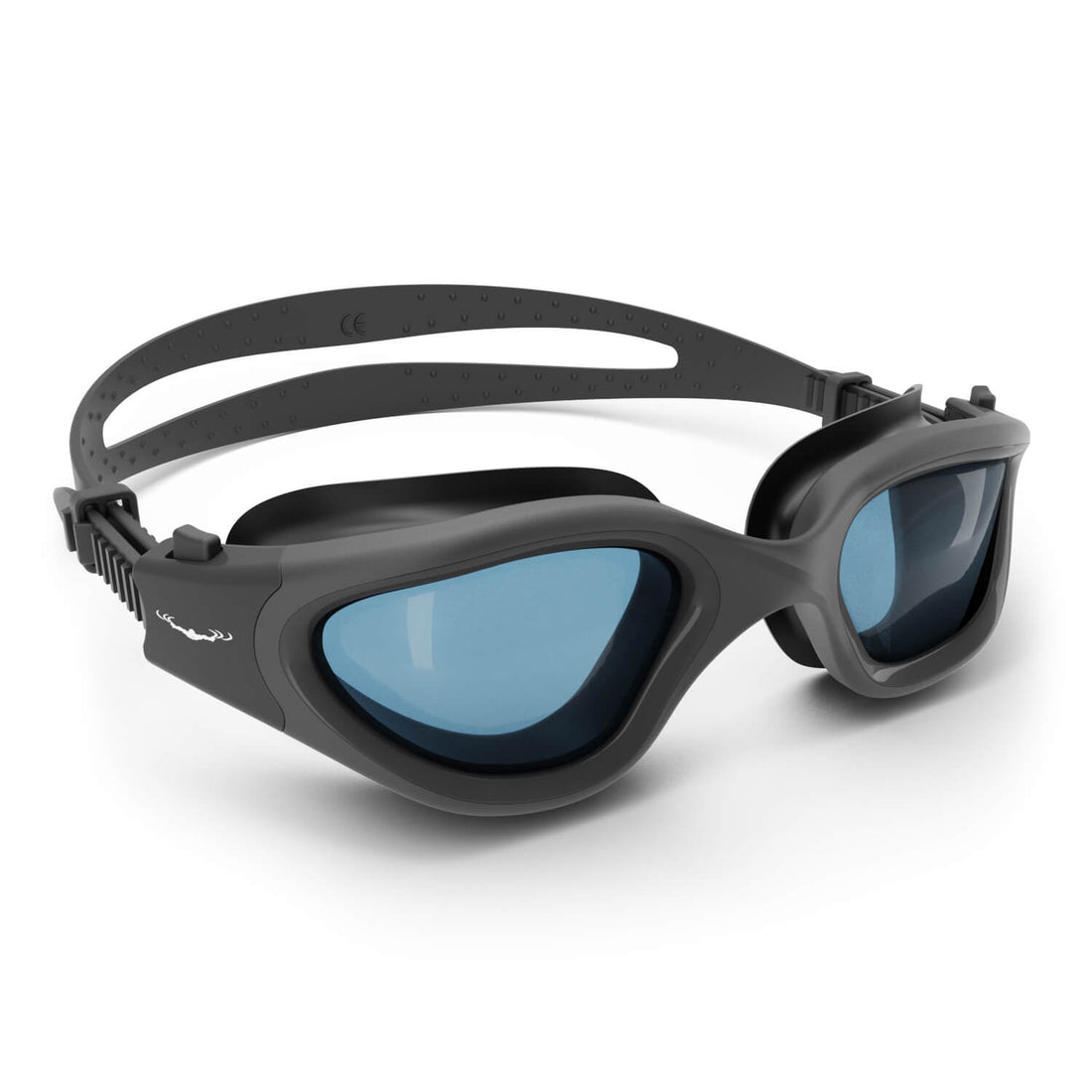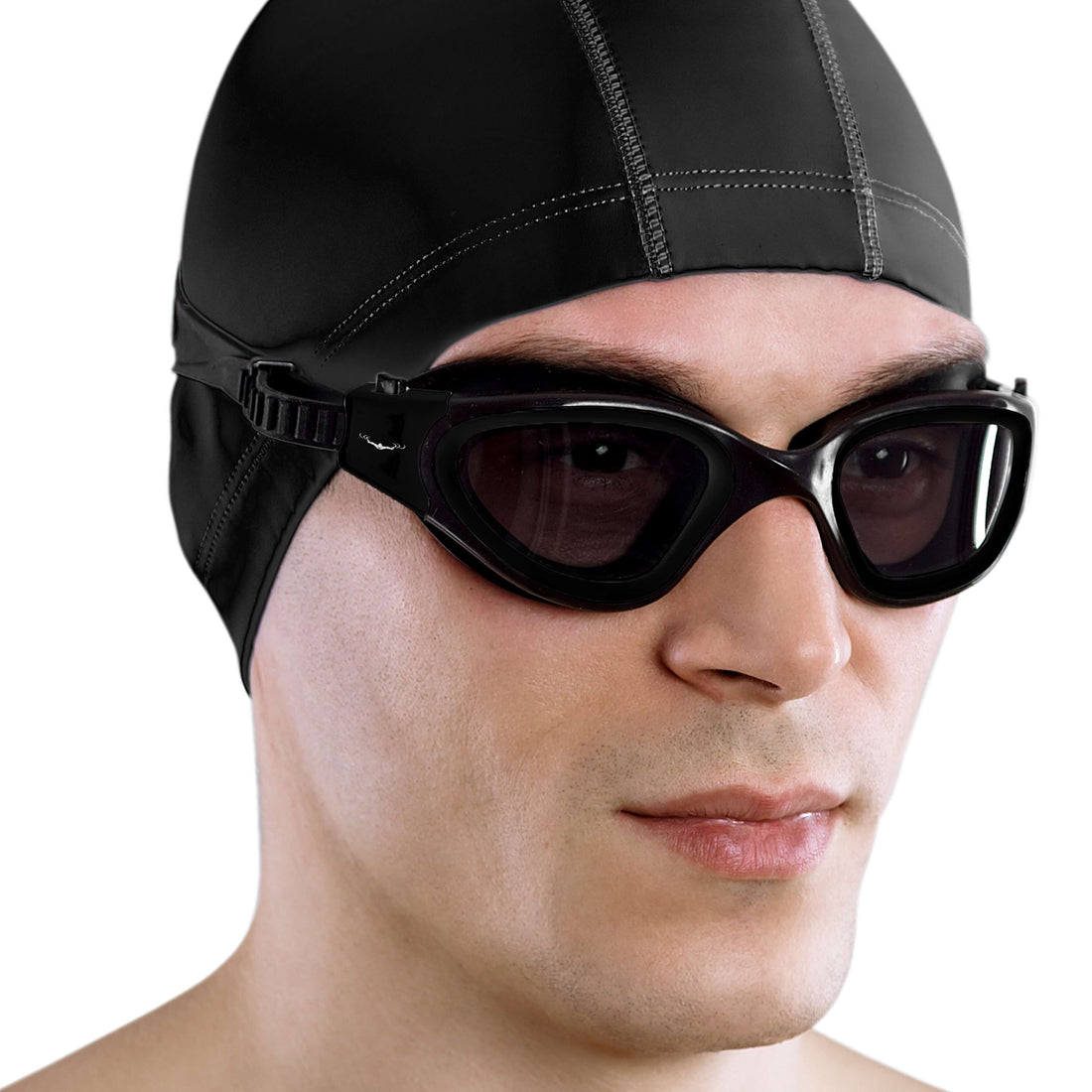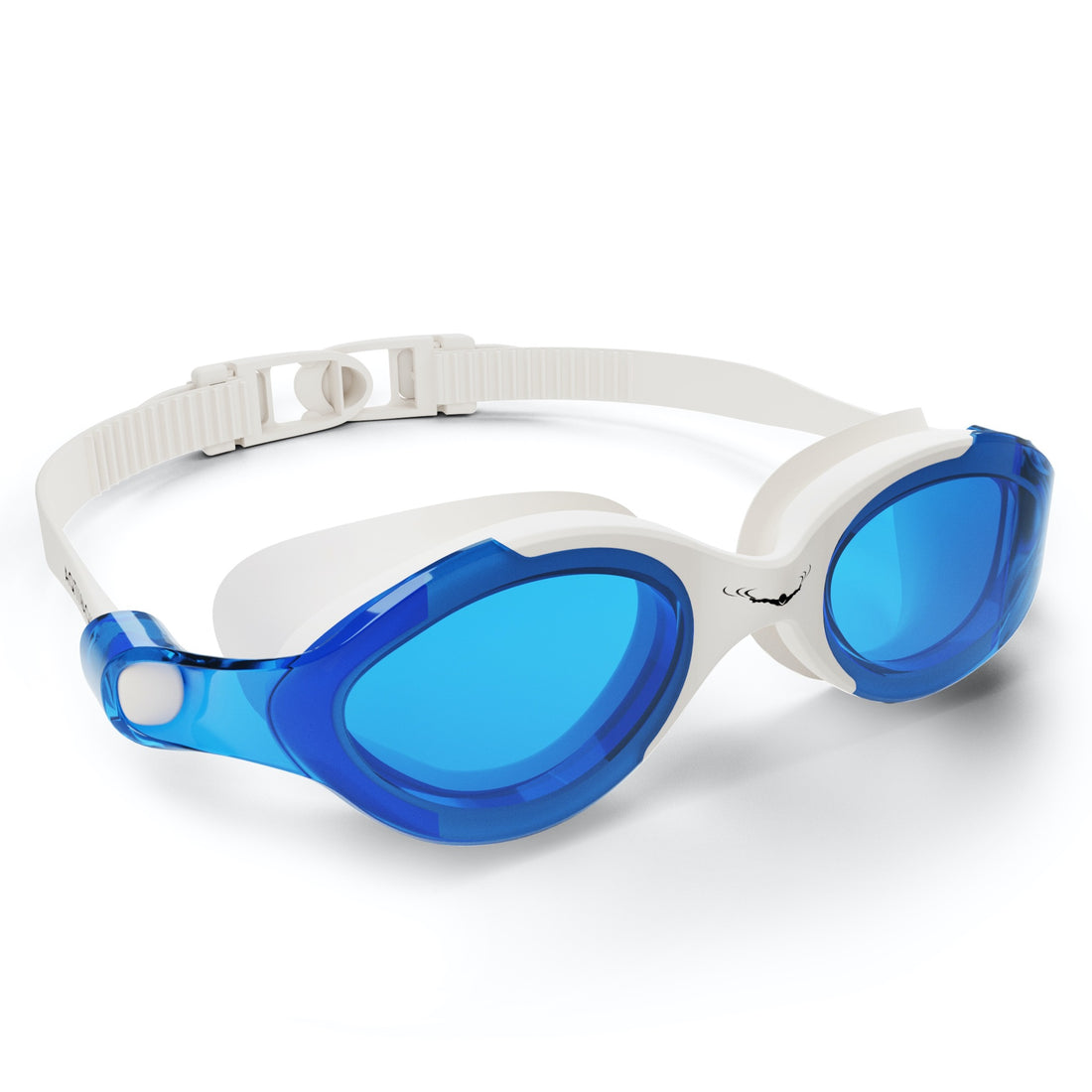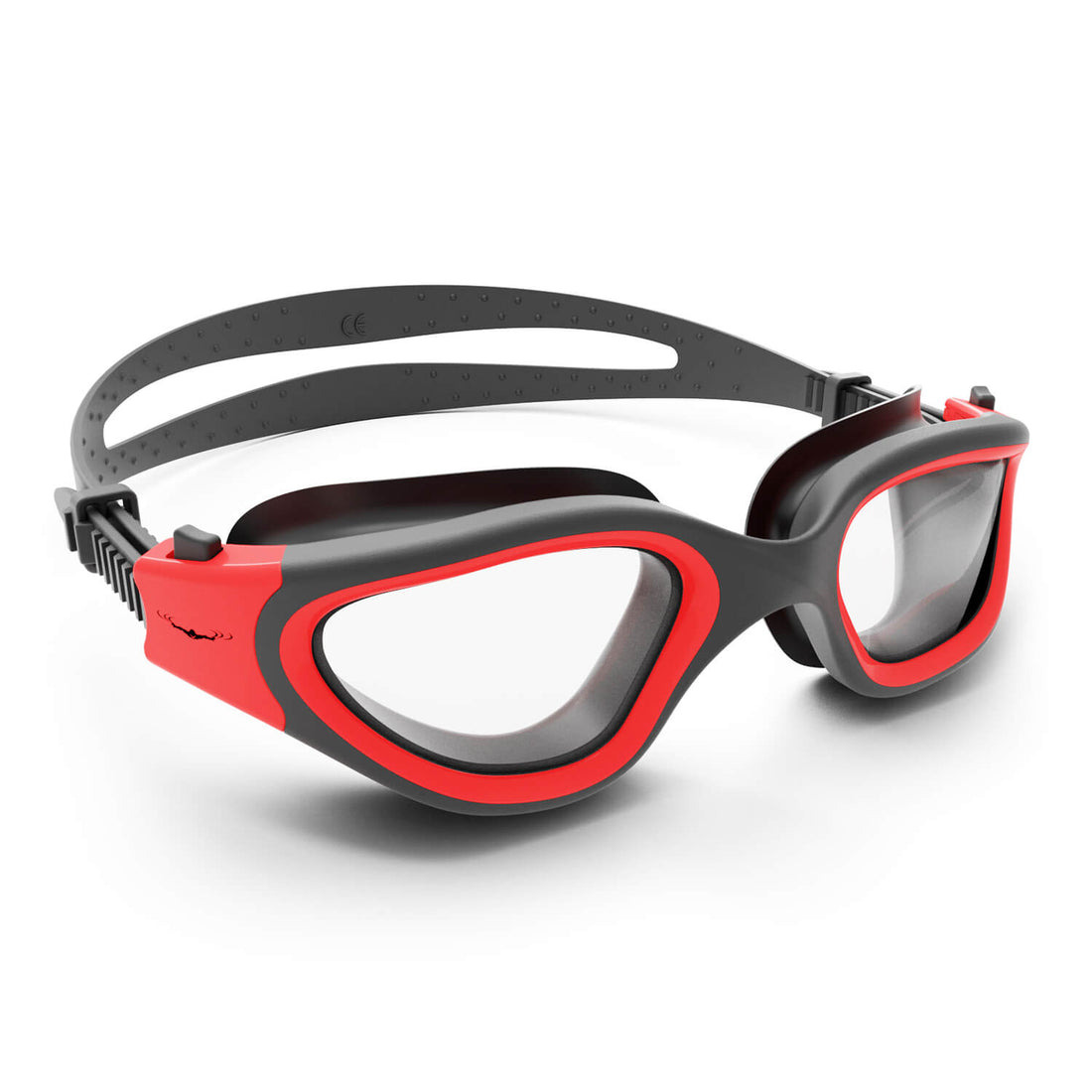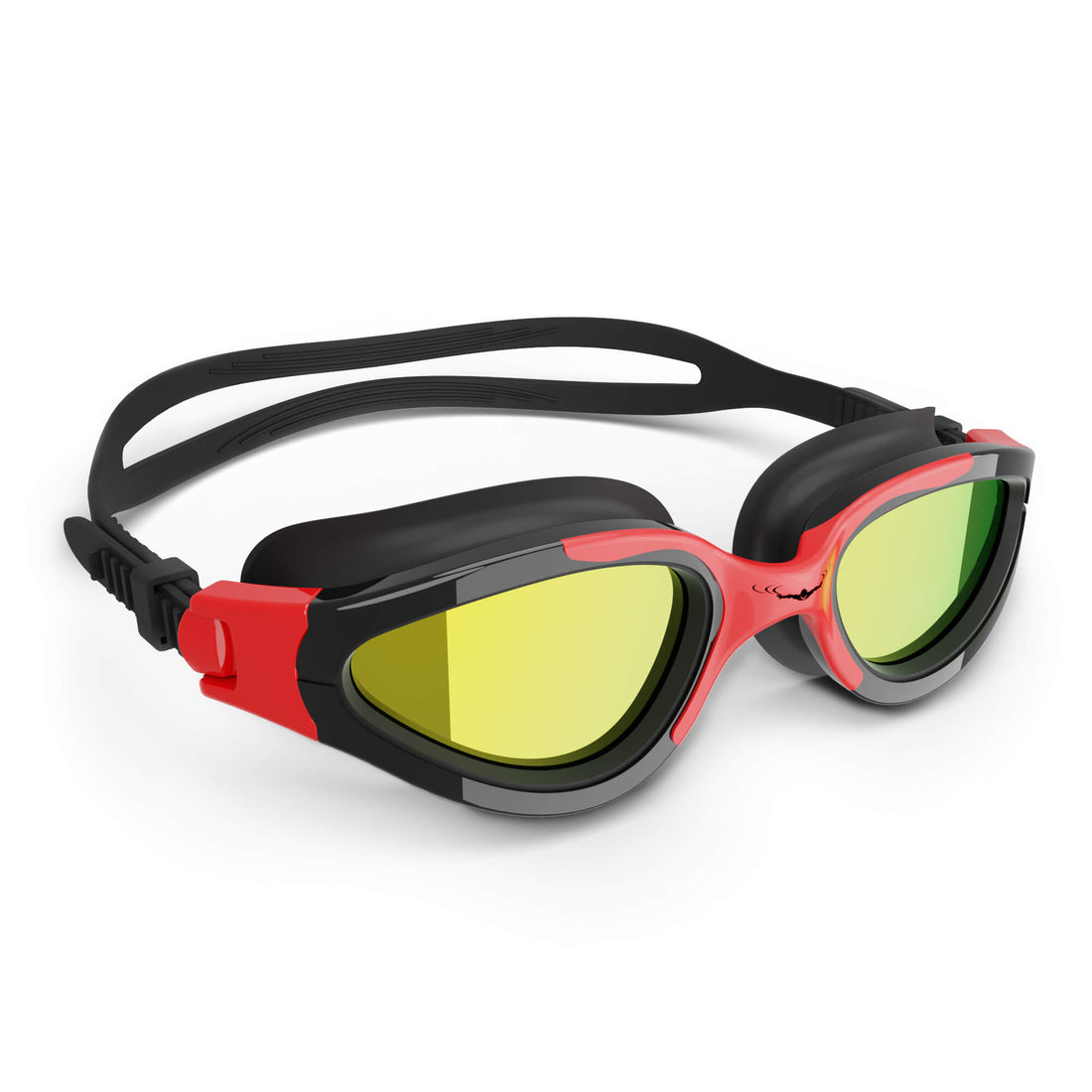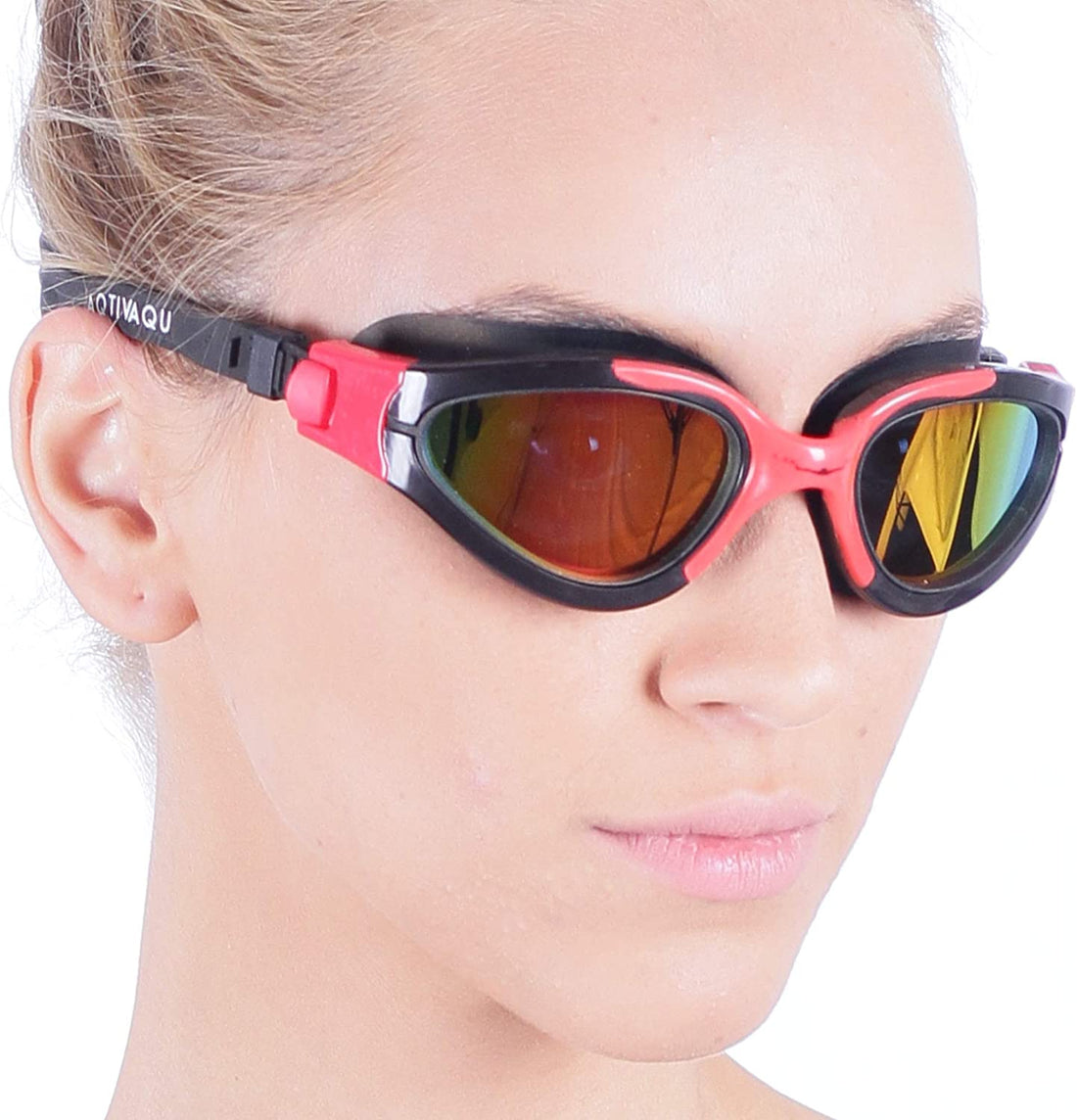Having a perfect pair of goggles is like having a superpower: you can see clearly underwater, and the goggles feel as natural as a part of your own body. Finding that perfect pair can take some trial and error, though. Here are the things you’ll want to know when you start your search.
Explore Your Options
Swim goggles come in a huge variety of shapes and styles to fit the needs of different swimmers. Here are some of the things you may want to consider:
- Visibility: Most goggles have a sort of oval window that you look through. That’s fine if you only need to look straight ahead, but if you swim in open water you probably want something that doesn’t block your peripheral vision.
- Lens Color: Tinted and mirrored goggles both help to shade your eyes if you swim in bright sunlight. If you stick to indoor pools, though, color doesn’t matter.
- Straps: Goggles with a single strap can end up sliding down toward your neck. Double straps fix this problem: you wear the bottom strap in the usual place and the top strap as high as possible, to prevent the goggles from sliding down.
- Size: Some goggles have tiny eye cups that are meant to fit inside your eye socket, right around your eyeball. At the other extreme are goggles that fit like a mask, making their seal along your forehead and cheekbones. The smaller types are more likely to stay in place, but bigger ones are usually more comfortable.
These considerations should give you some ideas for which models of goggles will work for you. The real test, though, is whether your chosen goggle actually fits.
A pair of goggles can only keep water out of your eyes if it makes an airtight seal with your face. Everybody’s face is shaped a little differently, so the goggles that work for your friend might not work for you.
You can check the fit of a pair of goggles without putting your face in the water. Stick the goggles to your face, without putting the strap on your head, and press hard. If the goggles stay on your face for a few seconds, you know you have a good fit.
Next, you need to decide how they feel. If the nose piece digs into the bridge of your nose, or if the goggles are uncomfortably tight around your eyes, that’s a dealbreaker. Anything that’s uncomfortable in the store will feel even worse by the end of a long workout. Swimmers who prefer tiny, tight goggles for racing often use a more comfortable pair for their everyday swims.
While you’re experimenting with fit, don’t be afraid to look beyond the label. If you’re shopping in the women’s category, try looking at men’s goggles if you need a bigger size, and vice versa. With a little trial and error, you should be able to find the perfect pair.



